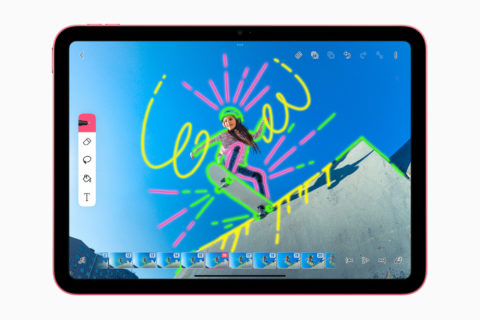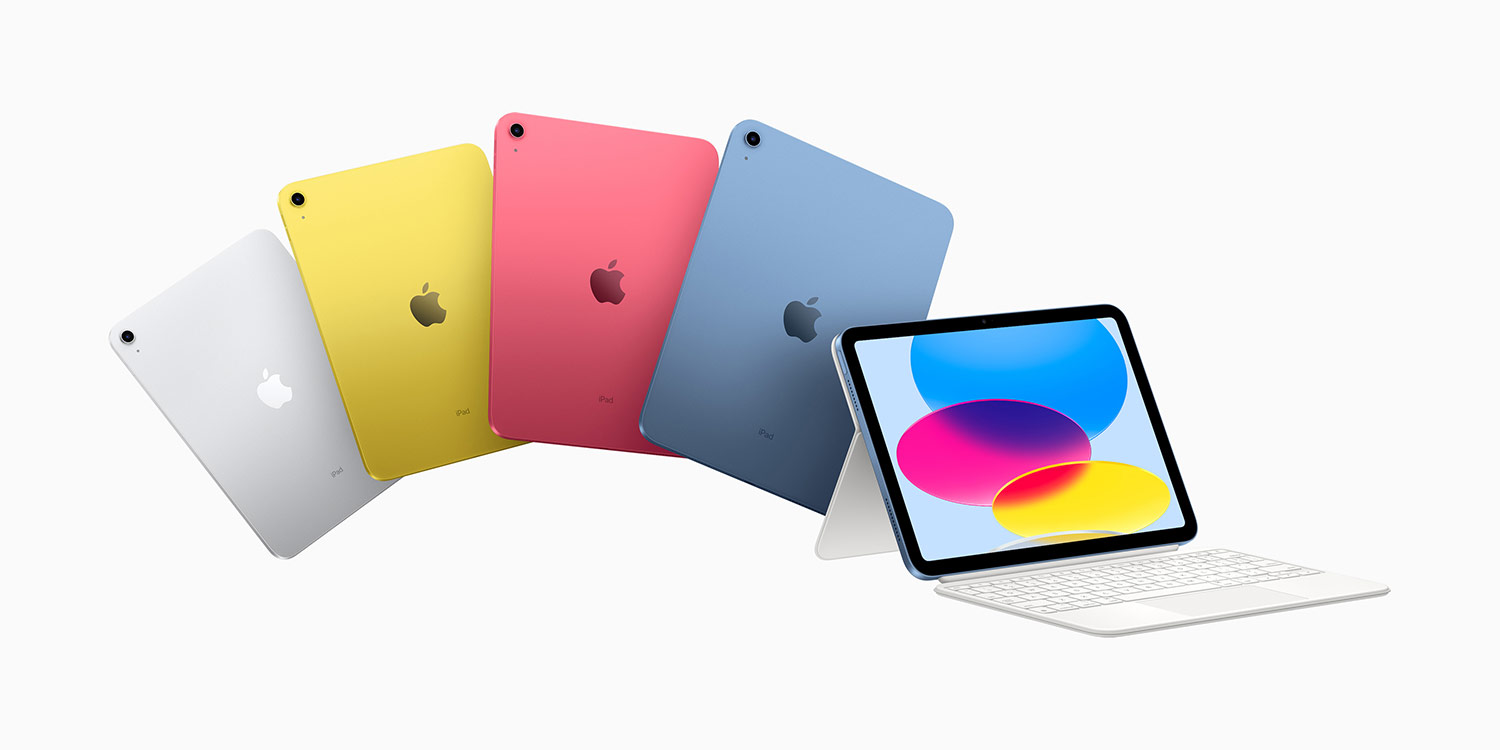All screen. Mostly great. Occasionally frustrating
The colorful 10th-generation iPad has arrived. As expected, it finally ditches the Home button. Like every other current iPad, this new model is all-screen. The Lightning port is history too.
But this iPad is a curious beast. To hit a price-point, it sometimes remains rooted to the past. And yet it on paper mostly equals the pricier iPad Air – and occasionally blazes past even the top-of-the-line iPad Pro. Let’s see how.

The new FaceTime camera position means you’re never looking off to the side.
The future of iPad
Let’s not get too excited. This is the entry-level iPad after all. Yet two new features hint at a future we’d like to be the present across the iPad range – yes, even the iPad Pro.
This new iPad has the FaceTime camera on the landscape (long) edge, to match how most people orient the device when calling people. And for work, the new Magic Keyboard Folio is a natty two-piece number with a kickstand and media key row. Nice.
Playing catch-up
Unsurprisingly, the iPad is playing catch-up in many areas. Touch ID moves to the power button. There’s 5G. You get stereo speakers in landscape, rather than audio blaring from one edge. And there’s that all-screen design, USB-C and a rear camera with specs that match the Air’s.
What is surprising is how the iPad has been allowed to play catch-up to this degree, given that its specs are pretty close to the iPad Air’s. Mind you, the price is now closer too – up from $329/£329 to $449/£499. (By comparison, the Air costs $599/£669.) If that seems too much, the 9th gen hangs on in the line-up – for now.

The all-screen design is great – but we wish that screen had an anti-reflective coating.
Stuck in the past
In hitting a price point, Apple made compromises – and this is where the new iPad might frustrate. The display is still not laminated and lacks an anti-reflective coating. We hope it’s less of a mirror than its predecessor’s display in bright light.
Elsewhere, the iPhone 12-era A14 chip reduces the iPad’s longevity compared to an M1-equipped Air, and means it won’t support Stage Manager (nor external displays).
Finally, this iPad supports the original (and inferior) Apple Pencil, which is Lightning-based. Because the iPad itself lacks a Lightning port, you need an adapter to charge the Pencil. That’s the price of progress, we suppose. (The specific price, in this case, is $9/£9 for the adapter.)

